Subject
- #Theme
- #Gyeongbokgung Palace
- #Hanbok
Created: 2024-02-05
Created: 2024-02-05 15:14
Gyeongbokgung Palace is a royal palace of the Joseon dynasty (1392–1910) located in the heart of Korea. It served as the Joseon dynasty's main palace (the first palace) for a long time and today remains a symbolic cultural heritage site of Seoul and Korea.

Overall view of Gyeongbokgung Palace
Gyeongbokgung Palace was built in 1395. Yi Seong-gye, who overthrew the Goryeo dynasty and founded the Joseon dynasty, stayed in the Goryeo capital of Kaesong for three years. However, Kaesong's small size led to severe housing and sanitation problems. Furthermore, the Goryeo dynasty's Suchanggung Palace was not only a relic of the previous dynasty but also didn't align with the ideal palace form envisioned by the Confucian principles of the time.
Yi Seong-gye and his close advisor, Jeong Do-jeon, decided to build a new palace and relocate the capital to Seoul. 'Gyeongbokgung' is a name coined by Jeong Do-jeon using an expression from the Confucian classic "The Book of Songs," signifying a palace overflowing with blessings. Gyeongbokgung Palace was built in strict adherence to the Confucian ideals of the newly established state, following the principle of "being simple yet not humble." Thus, it was relatively small in 1395 but gradually expanded over the centuries.
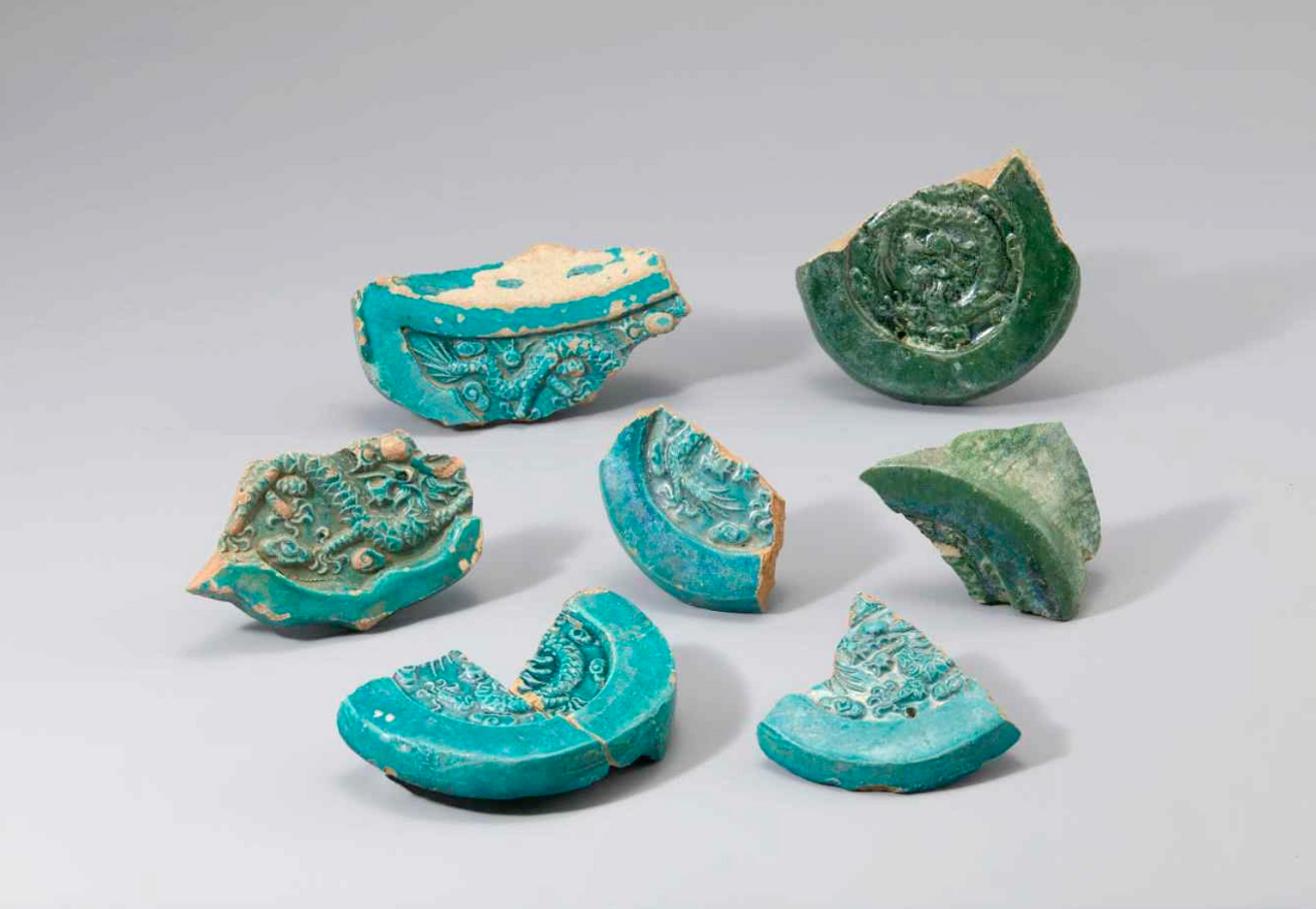
14th-century Gyeongbokgung Palace roof tile. The roof of Gyeongbokgung Palace when it was first built was blue, unlike today.
The palace was destroyed in 1592. It is believed that Gyeongbokgung Palace was set ablaze during the retreat of the Japanese Toyotomi shogunate, which had occupied Seoul. The palace remained in ruins for 270 years before being rebuilt in the 19th century. However, the reconstruction was hastily carried out to enhance royal authority, and the architectural style reflects the late 19th century rather than the 14th century. (The 19th-century version of Gyeongbokgung Palace is more recent than the London Underground.)
Therefore, the current Gyeongbokgung Palace has the least cultural value among the remaining Joseon palaces. However, it remains a symbol of Seoul due to its significance as the main palace of the Joseon dynasty and its easy accessibility as an ancient structure in the city center. Notably, Gyeongbokgung Palace is a must-visit destination for foreign tourists to Korea, known as an excellent place to experience Korean traditional culture.
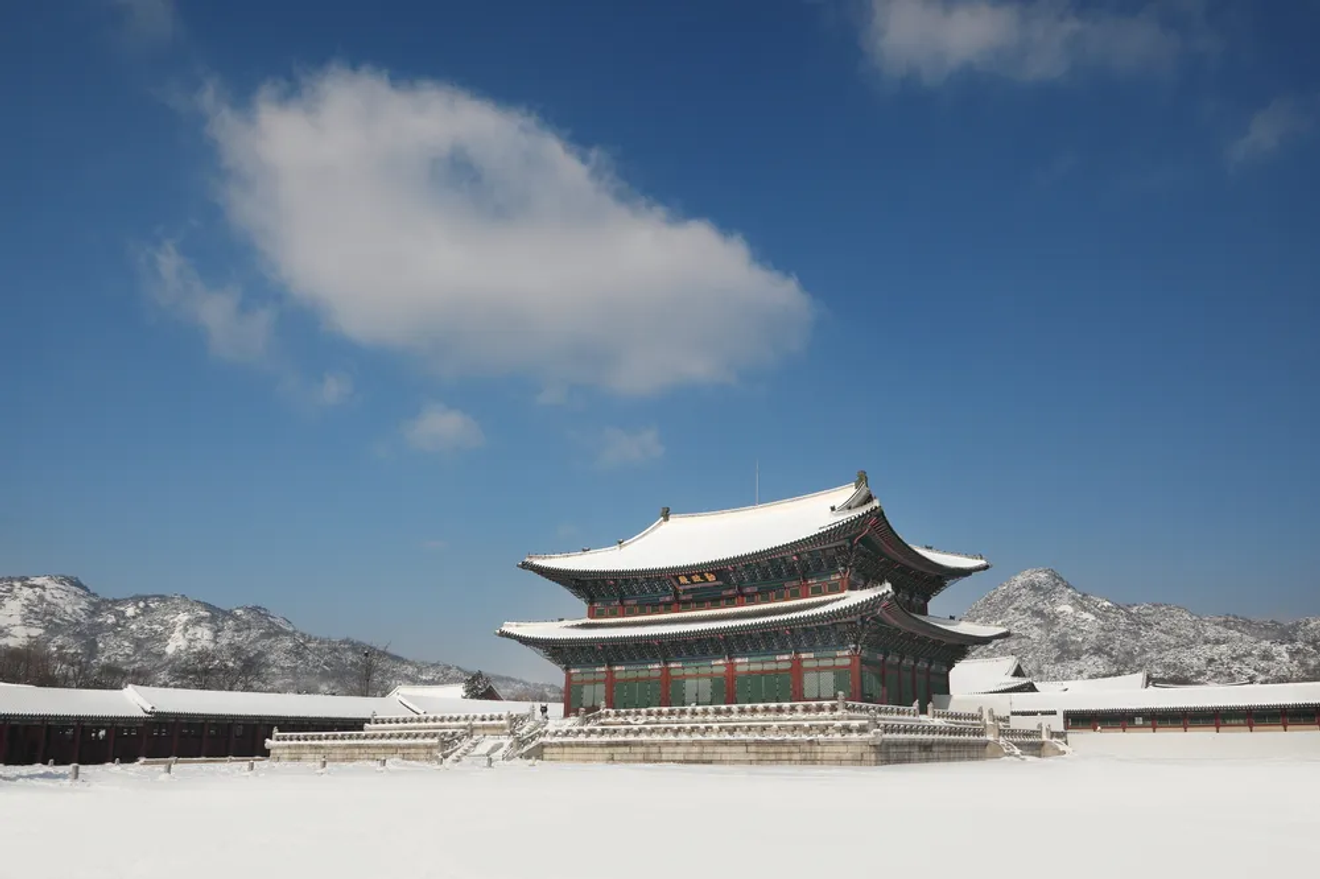
Geunjeongjeon of Gyeongbokgung Palace
Gyeongbokgung Palace comprises hundreds of buildings. Among them, Geunjeongjeon, Sajeongjeon, and Gyeonghoeru are the most representative structures. Geunjeongjeon is the central building of Gyeongbokgung Palace, where official royal and court events were held.
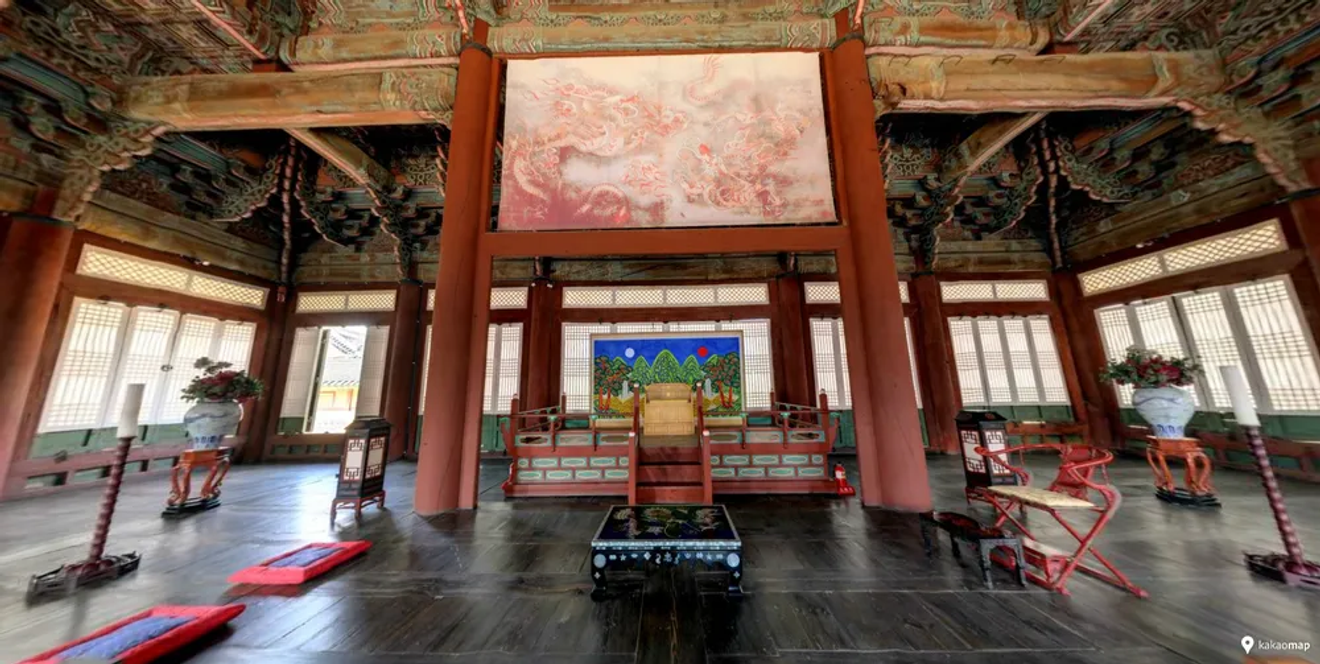
Interior of Sajeongjeon in Gyeongbokgung Palace. It was the Joseon King's office.
Sajeongjeon was used as a kind of office where the king worked. Many scenes in Korean TV dramas depicting conversations between the king and his officials are set in this location.
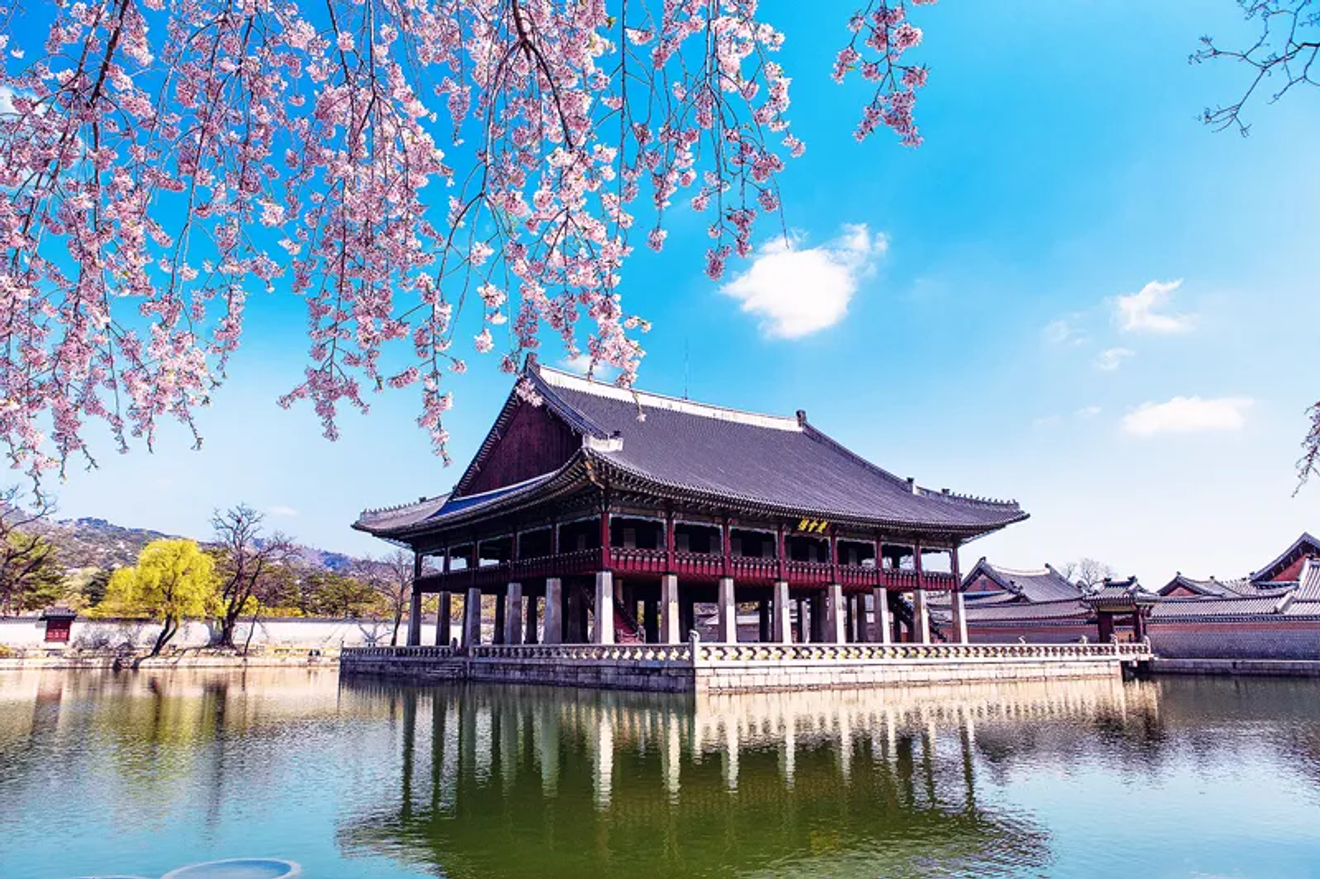
Gyeonghoeru of Gyeongbokgung Palace
Gyeonghoeru is a building constructed on a pond, used for banquets hosted by the king for himself or foreign envoys. In the past, Gyeonghoeru was recognized as a landmark of Seoul, considered a must-see for Chinese envoys visiting Joseon.
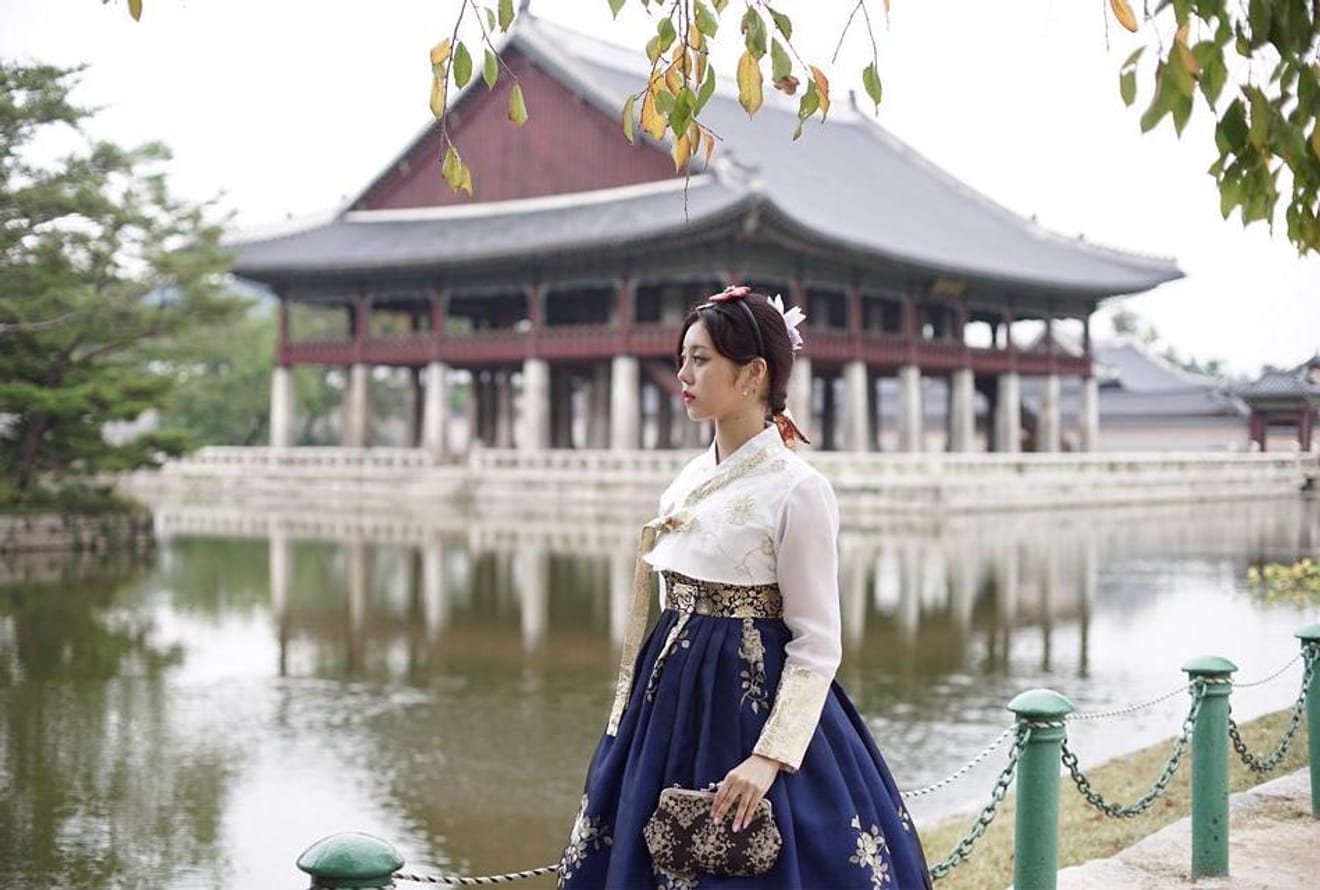
Reference image of Hanbok Plus, a Hanbok rental shop
Many shops near Gyeongbokgung Palace rent out "hanbok," Korea's traditional clothing. Visiting Gyeongbokgung in a rented hanbok grants free admission. The palace grounds are a great setting for hanbok, as the surrounding modern structures are mostly hidden from view. Capture photos in hanbok to evoke the feeling of stepping back in time to 19th-century Joseon.
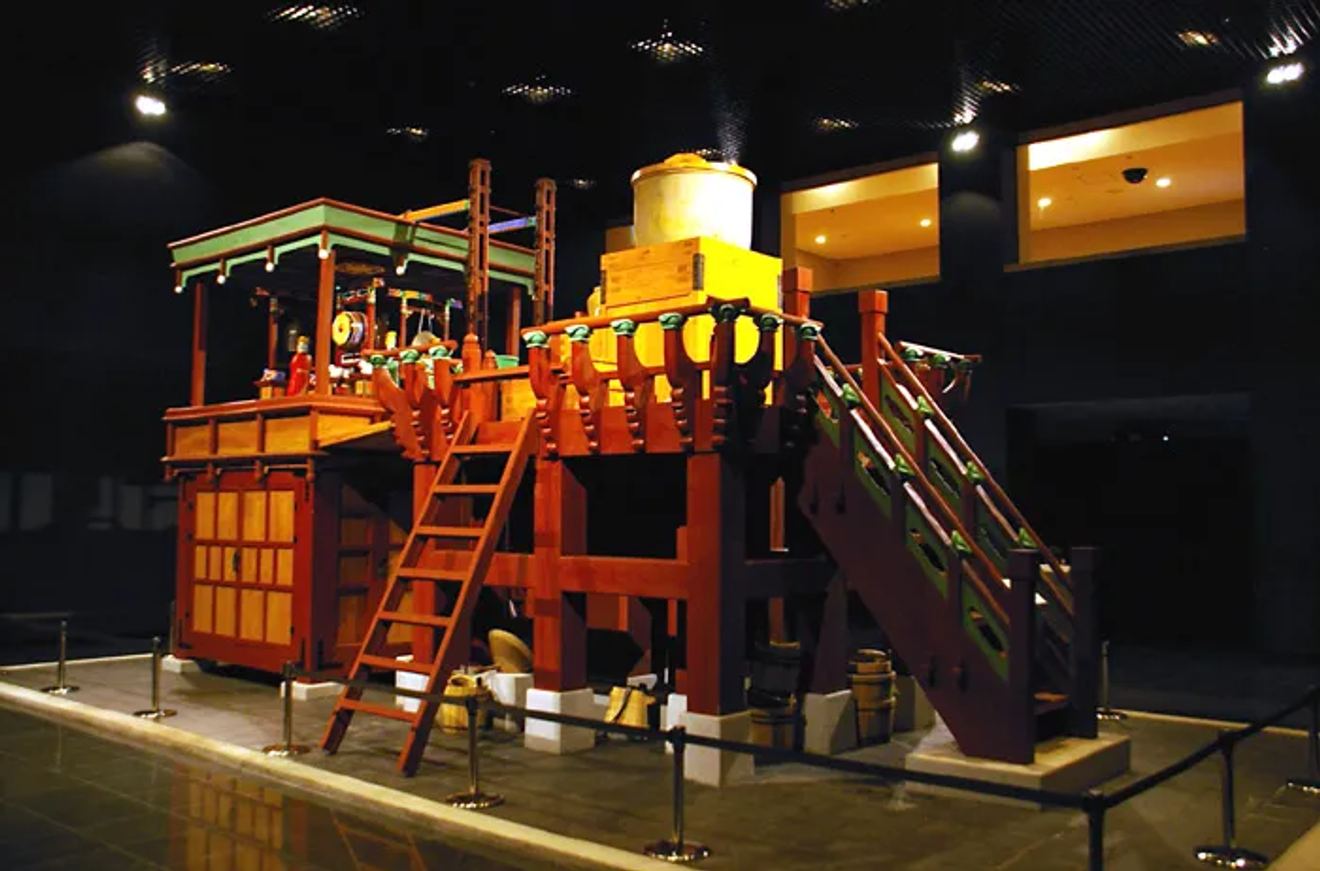
Jagu, the water clock at the National Palace Museum
The National Palace Museum is located within Gyeongbokgung Palace. It showcases artifacts and clothing used in the palace. Notably, the museum features a water clock called "Jageoru" (자격루), invented in the mid-15th century. By checking the Jageoru schedule, you can witness wooden figures striking bells automatically.
Gyeongbokgung Palace operates from 9:00 AM to 6:00 PM. However, admission is only allowed until 5:00 PM, so keep this in mind when planning your visit. Admission fees are 3,000 won for adults, 1,500 won for teenagers, and 800 won for children. Wearing hanbok allows for free entry. You can easily reach the palace from Gwanghwamun Station (Seoul Subway Line 5) or Gyeongbokgung Station (Seoul Subway Line 3).
Comments0